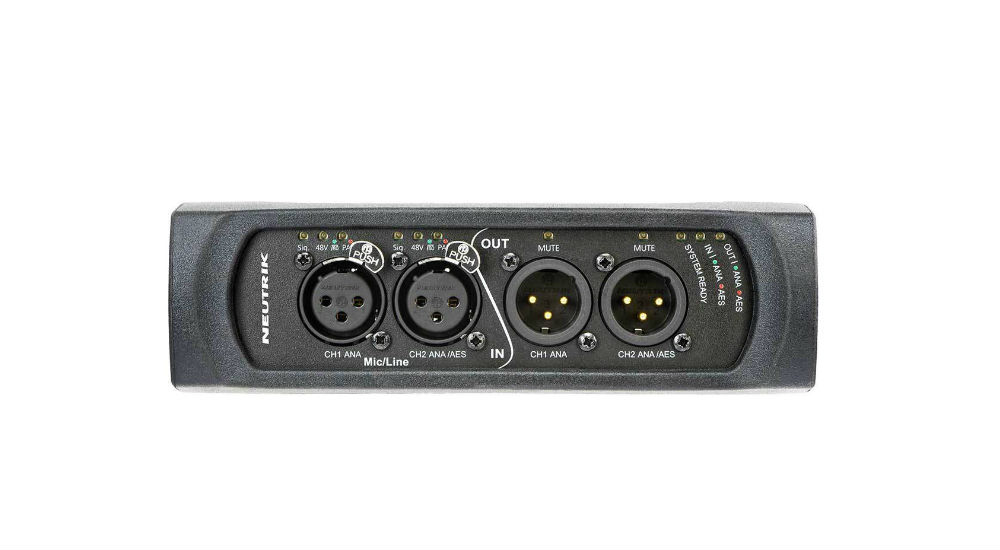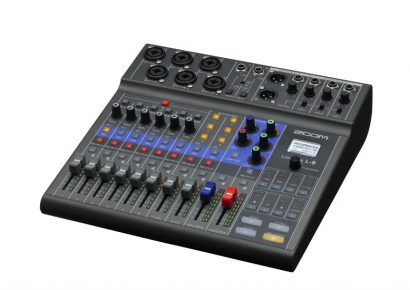As the years passed and my audio CV grew I soon started to realise that maybe he wasn’t that far off the mark. I mean as producers, we are pretty quick to think of audio through the artful lens of record making, yet there is a whole other (albeit drier) segment of the audio world that exists right under our noses, in the ceiling speakers above and the XLR wall inputs at the local rec centre. It’s the world of network audio, and in network audio, Dante reigns supreme.
In network audio, interfaces like the Neutrik NA2-IO-DPRO are important in that they serve as entry points to a much larger system, taking analog signal and converting it into system friendly information protocol (in this case Dante), in turn giving said signal cart blanche to all the ridiculous routing options afforded by AoIP. This means 70m+ cable runs with little to no loss of signal, insanely large channel counts (via a single cable) and all with next to zero latency, making Dante absolutely ideal for complex, large scale installation projects like schools and airports and AV heavy applications like museums and art galleries. In short, an interface is a portal into a much larger world.
So what makes a good Dante interface you may ask? Well basically the same criteria that applies to almost all other audio hardware. Build quality, choice of components and above all else – sound.
Upon unboxing the NA2-IO-DPRO, the first thing that you notice is the moulded rubber exoskeleton surrounding the unit (almost like a tradie radio or one of those old Nokia’s designed to not break when dropped). This makes perfect sense when you consider the kind of life a Dante interface is likely to live. It’s an industrial product to be installed on site, so it only makes sense that it would bear these kind of heavy duty, commercial adornments.
Some Dante interfaces feel like a cheap modem with a couple of XLR inputs attached. Suffice to say the NA2-IO-DPRO is not one of them. Everything about the unit has a look and feel of quality and the four Neutrik connectors allow for good, clean signal in and out of the unit.
For a company that made its bones as purveyors of the finest quality connectors out there, it comes as no surprise that the input and outputs on the NA-IO-DPRO are a cut above what one would normally see on an interface of this type. Two in and two out with Primary and Secondary Ethernet ports on the back that also provide power to the unit (with the help of a PoE switch or injector) it’s a very practical layout for a very practical product.
People new to this kind of thing may be wondering why there are no controls or pots to be found anywhere on the interface itself. As is the norm in network audio, all features on the NA2-IO-DPRO are controlled via the very intuitive DPRO controller software that comes with the unit. Input gain, Phantom Power, Filters and Pads can all be controlled in the box, while output channels can also be muted and unmuted within the software. For someone who works primarily in the world of music production, this feels like a particularly novel workflow and makes for a refreshing change from the world of hardware mixers and preamps.
Dante or Digital Audio Network through Ethernet is in many ways the final frontier for the budding audio geek. Already an omnipresence in the Broadcast and install world, its flexibility, near zero-latency and minimal cabling have made it the de-facto audio protocol for any application that values new school efficiency over gear fetishism. The NA2-IO-DPRO takes that famous Neutrik utilitarianism that has come to define the brand and applies it to what is an extremely robust and quality interface for the install market, a perfect entry point to the unlimited possibilities of the Dante universe.

